Even the most engaged employee has experienced burnout in their professional lives. From long working hours to increasing work pressures, burnout is becoming increasingly common in today’s professional world. For employers, burnout is a cause for concern. Decreased productivity, high attrition rates, and low morale can have a devastating impact on a workplace. In the 20 years that we have been transforming workspaces, we have noticed how and why many employees become burned out and how employers can implement workplace strategies to prevent burnout in the first place. To truly combat burnout, employers need to get to the root of the issue and work to understand its impact on employees.
Understanding Employee Burnout
Employee burnout poses a significant threat to organizational productivity and overall well-being. Characterized by chronic exhaustion, reduced efficacy, and feelings of cynicism towards work, a Benefits Canada survey revealed that 75% of employees reported experiencing burnout at some point in their current role.
At Streamline, we recognize the multifaceted nature of burnout and its detrimental effects on employee morale and performance. We’ve been creating human-centric workspaces for over 20 years, and in that time, we have identified the most common causes of employee burnout to include:
- excessive workload
- diminished autonomy
- suboptimal work environments
By understanding the root causes of burnout, we empower organizations to implement targeted solutions that foster a healthier and more conducive work environment.
The Role of Workplace Design in Preventing Burnout
Current trends in Canadian office interior design reflect a massive shift towards creating purpose-driven and human-centric work environments. With the rise of hybrid work environments, the emphasis is on creating flexible spaces that seamlessly accommodate both in-office and remote work. Modular furniture design, easily accessible charging ports, and collaboration spaces have all become mainstays in the hybrid-friendly offices of modern Canada.
An empowered employee is a happy and productive employee. A burned-out employee is the opposite. While job satisfaction, autonomy, and excessive workloads are massive contributors to burnout, poor workplace design plays a key role.
Employees spend a significant portion of their day and lives in the workplace, so the environment profoundly impacts their workflow and well-being. Uncomfortable surroundings and elevated stress levels can quickly lead to disempowerment and exhaustion, ultimately culminating in burnout.
Tailoring the workspace to meet the unique needs of employees is vital in preventing burnout. For instance, if your sales team is going through a time of hectic work, quiet relaxation rooms provide a calm environment for your people to recharge. On the other hand, if your employees feel isolated in cubicles, opening up the space to include social areas will make a big impact. Effective workplace design prioritizes employee well-being through elements like ergonomic furniture, ample natural light, and inviting spaces conducive to productivity.
The most efficient approach to combating employee burnout is through prevention, which begins with implementing proactive strategies.
Implementing Strategies for Burnout Prevention
The cornerstone of a thriving workspace lies in a well-crafted workplace strategy. By partnering with HR experts and workplace psychologists, we identify stress triggers unique to your organization. Here are some of the most effective ways to build burnout prevention into your workplace design:
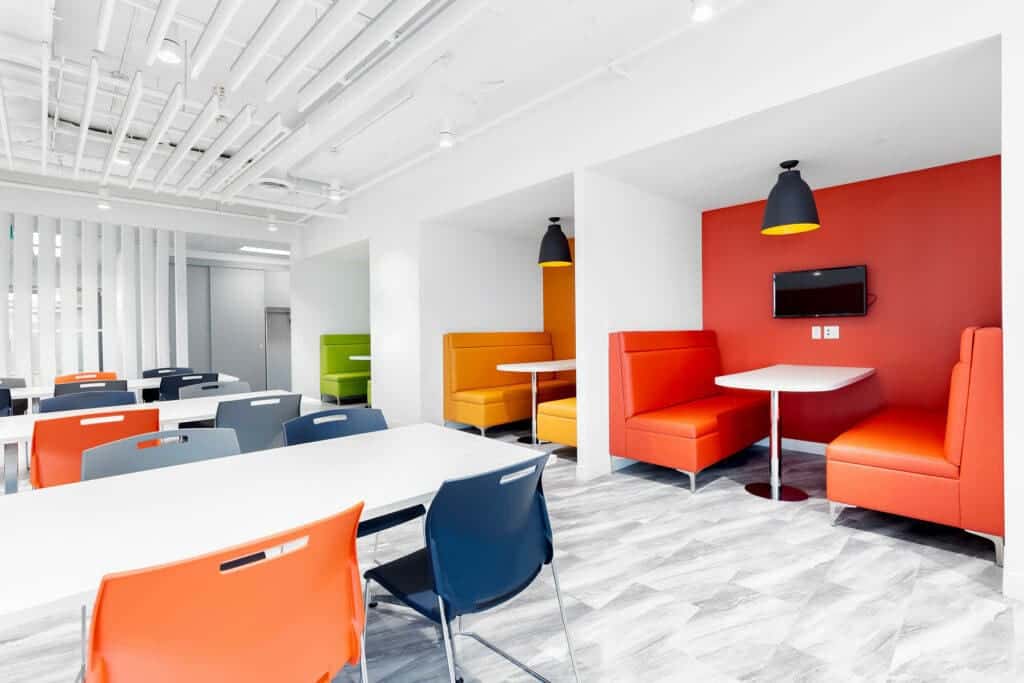
Relaxation Areas
These quiet spaces are dedicated to relaxing and unwinding, with comfortable seating and often with natural elements such as plants and even indoor water features. This peaceful space gives employees a space to take a breather from current workplace stressors and supports an overall culture of wellness by reinforcing the idea that making time to de-stress is essential. We noticed that wellness rooms are a favourite of our national and global clients, demonstrating that strategically planning your office design means including wellness-focused features.
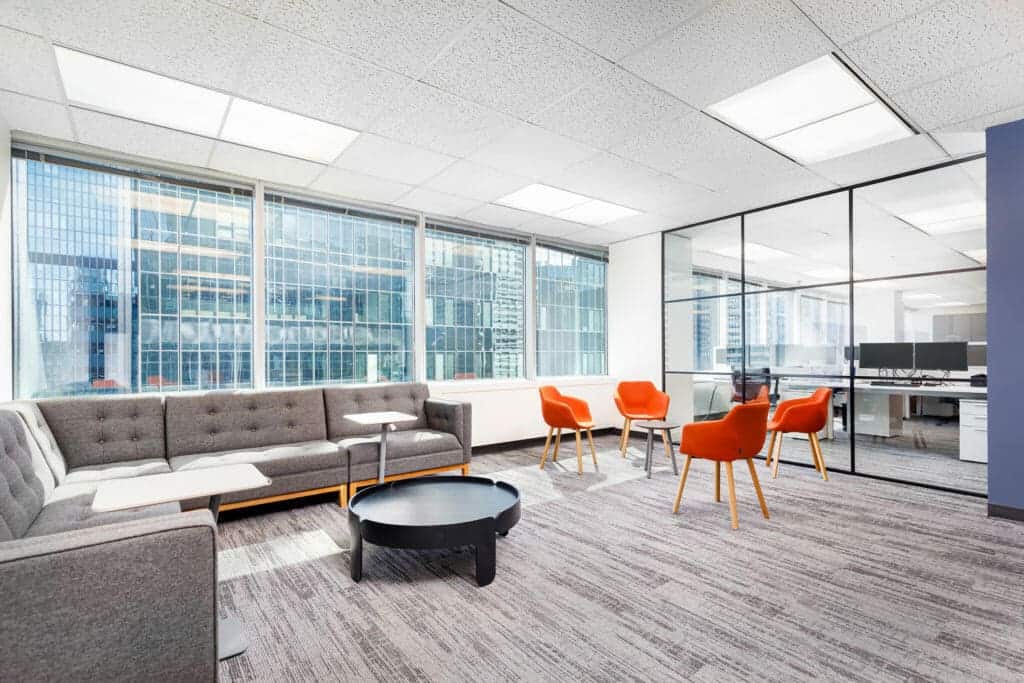
Socialization and Collaboration Areas
It’s no secret that while hybrid and remote working improves work-life balance, it can and does make staff lonely and isolated. More than ever, employees are using office days to socialize, coming into the office to see colleagues and catch up. Providing social spaces in the office separate from collaborative workspaces helps facilitate this increased desire for socialization. It also creates a boundary between collaborative work and socialization, encouraging employees to take breaks rather than working straight through lunch.
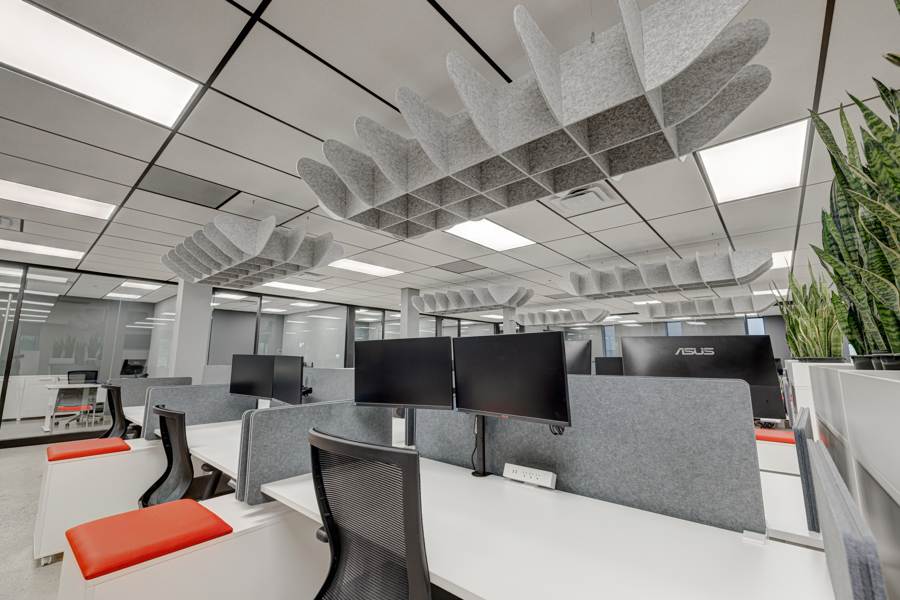
Ergonomic Workstations
The workstations in your office should enable your people to do their best work – this isn’t possible if desks are too small, chairs are uncomfortable, and workstations aren’t tailored to specific needs. Ergonomic workstations ensure your people are comfortable and capable of great work. This can look like everything from height-adjustable desks to desk dividers in an open-plan office.
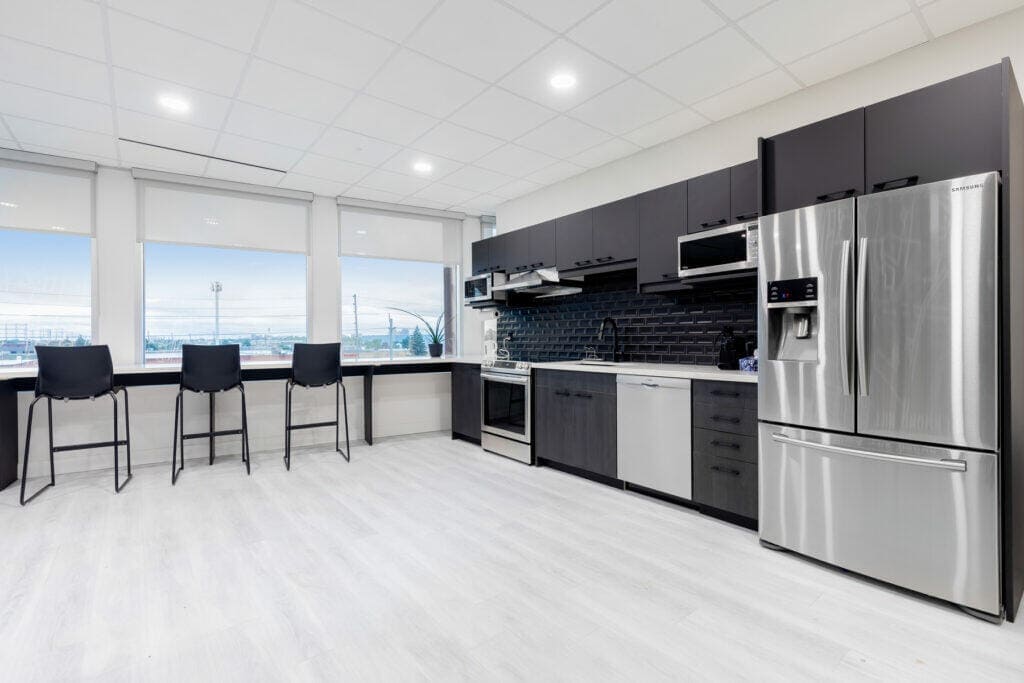
Provide Healthy Alternatives
Stocking an employee café with options besides just coffee – such as a variety of teas and sparkling water – helps to give employees options. While coffee is an excellent option for those who want it, caffeine contributes to feelings of anxiety and stress. Offering a variety of lower-caffeine beverages can reduce caffeine intake and support overall wellness. Similarly, stocking a variety of healthy snacks like fruit and protein bars helps create a healthy workplace.
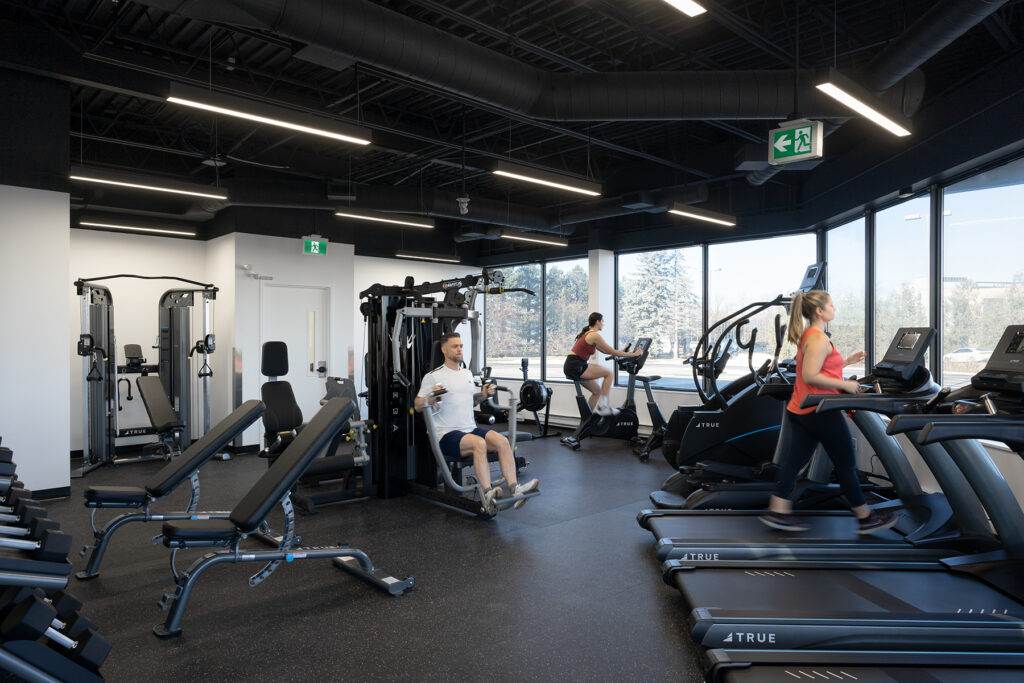
Support Physical Activity
Incorporating a gym or exercise area into a workspace is ideal if there is space and budget. However, having washrooms equipped with showering facilities, changing rooms, and soaps and hair dryers allows employees to exercise before work or during their lunch break. For employees, having a workspace that provides value to their personal life and goals goes a long way in preventing burnout.
Our recent confidential Ottawa client included a fitness gym, a change room, and showers.
How To Implement These Strategies
First and foremost, it’s essential to understand your employees and their workplace needs. A workplace questionnaire can quickly and effectively help HR leaders understand exactly what your people want and how it can improve their productivity. From here, it’s time to consider logistics. Timeframes, busy periods and budgets are important aspects of workplace strategies. If you have a very specific budget, we can help you decide where your budget should go so you can prioritize the highest-impact design choices while economizing on elements that are less critical to your business and employee needs.
Remember, the long-term benefits of preventing burnout far outweigh the upfront costs. Employee burnout leads to decreased productivity, and if left unaddressed, employees leave in search of more fulfilling roles. This is a costly and time-consuming process.
Developing a strategic workplace design is a lasting and highly effective way to implement burnout prevention strategies. Our experts in workplace psychology, consumer experience, and workplace organization work with you to create a strategic plan for your office design. By analyzing your needs and challenges, we identify potential design solutions, helping prevent employee burnout and improve culture and workplace experience.
Contact us at Streamline for expert guidance in designing a workspace that’s fit for today and future-proofed for tomorrow.
